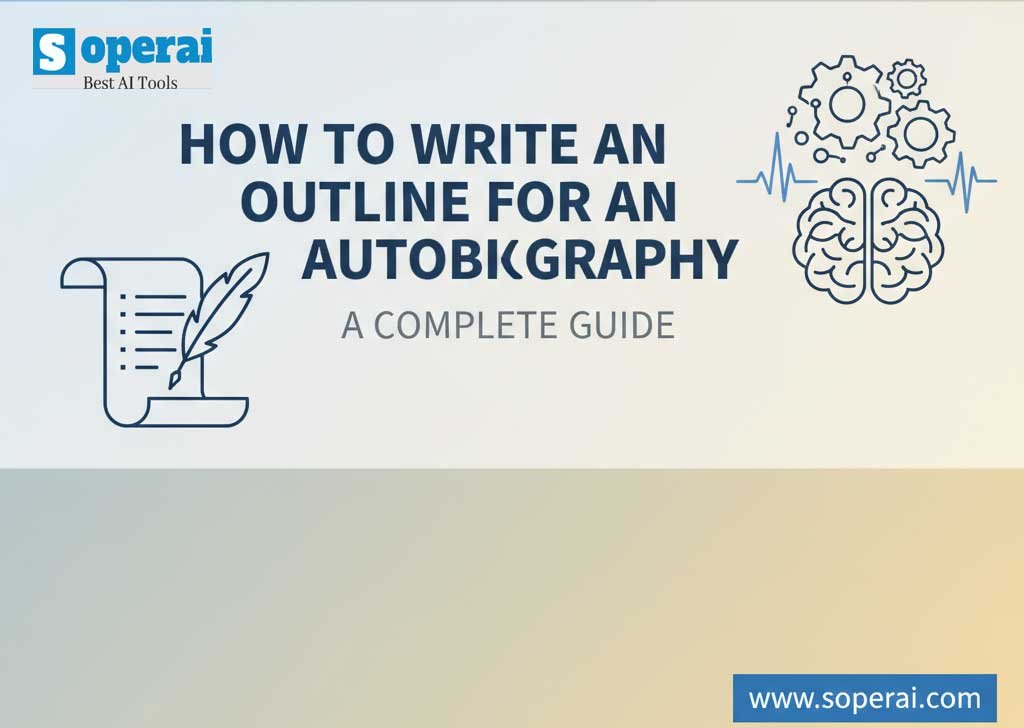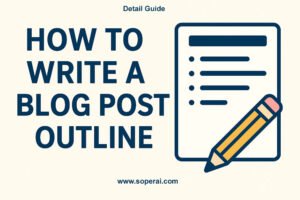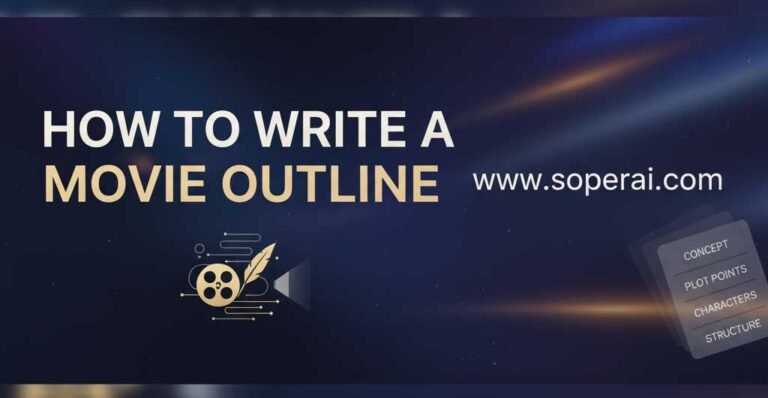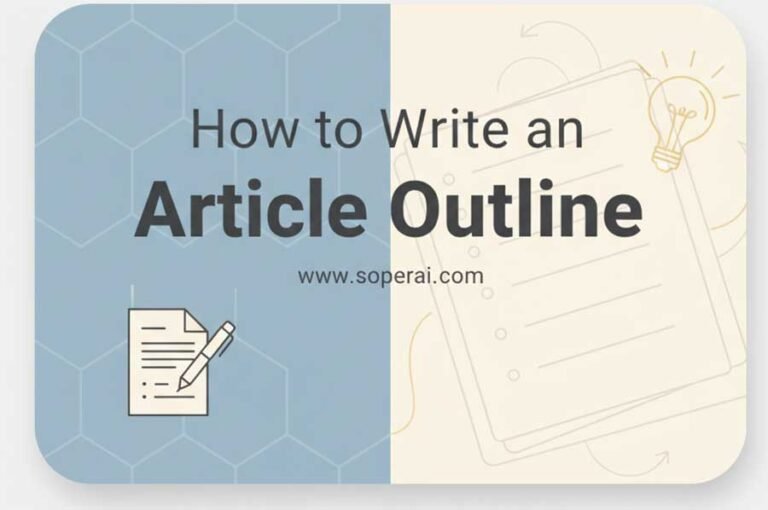Every person carries within them a unique tapestry of experiences, relationships, and lessons learned that could inspire, educate, or comfort others. Your life story matters, and it deserves to be told with intention and care. Whether you’re a CEO looking to share business wisdom, a grandmother wanting to preserve family history, or simply someone who believes their journey could help others, writing an autobiography is one of the most meaningful projects you can undertake.
Many people mistakenly believe that autobiographies are reserved for celebrities, politicians, or those who’ve achieved extraordinary fame. This couldn’t be further from the truth. Every life contains moments of triumph, struggle, growth, and transformation that resonate with universal human experiences. Your story of overcoming adversity, building relationships, pursuing dreams, or finding meaning in everyday moments has the power to touch readers in ways you might never imagine.
However, jumping straight into writing without a clear roadmap often leads to frustration, writer’s block, and abandoned projects. The key to successfully completing your autobiography lies in thorough preparation and strategic planning. This comprehensive guide will walk you through every step of creating a detailed outline that will serve as your north star throughout the writing process. You’ll learn how to organize your memories, structure your narrative, develop compelling characters, and weave together the themes that make your story uniquely yours.
By the end of this guide, you’ll have all the tools necessary to create a robust outline that transforms the overwhelming task of writing your life story into a manageable, enjoyable journey of self-discovery and creative expression.
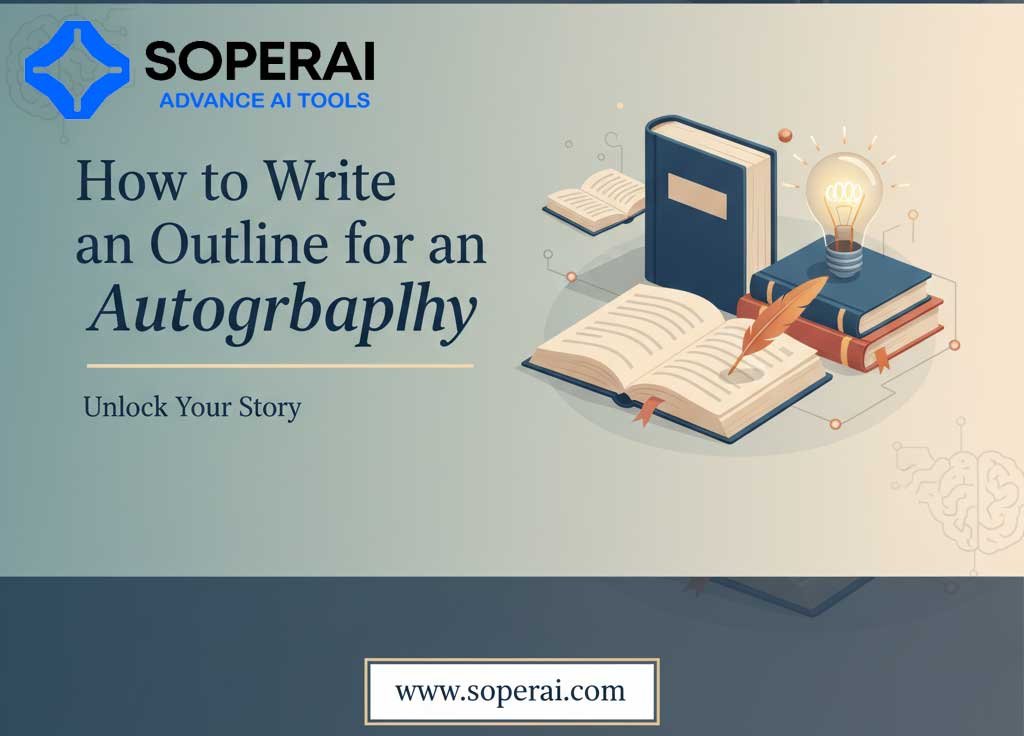
Before you can effectively outline your autobiography, you must clearly understand why you want to write it. This foundational understanding will guide every decision you make about structure, content, and tone throughout your writing journey.
Understanding the Purpose of Your Autobiography
Discover the meaningful reasons behind sharing your life story
Self-reflection and personal growth
Often serves as a primary motivation. The process of examining your life experiences, identifying patterns, and understanding how past events shaped your current self can be profoundly therapeutic and enlightening. Many writers discover new insights about themselves, gain closure on difficult experiences, and develop a deeper appreciation for their journey.
Preserving family history and legacy
Drives many autobiographical projects. Your story serves as a bridge between generations, helping children, grandchildren, and future descendants understand their roots, family values, and the experiences that shaped their lineage. These personal histories often become treasured family heirlooms, more valuable than any material inheritance.
Sharing lessons learned with others
Transforms personal experiences into universal wisdom. Whether you’ve navigated career challenges, overcome health issues, built successful relationships, or learned important life lessons through trial and error, your insights can guide and inspire others facing similar situations.
Professional or career-focused narratives
Appeal to those whose work life forms a central part of their identity. Business leaders, entrepreneurs, artists, educators, and professionals in various fields often write autobiographies to share industry insights, leadership lessons, or career strategies with others in their field.
Therapeutic and healing purposes
Cannot be underestimated. Writing about traumatic experiences, difficult relationships, or challenging periods in your life can facilitate emotional healing, help process complex feelings, and provide a sense of closure and empowerment.
Identifying Your Target Audience
Understanding who will read your autobiography significantly impacts how you structure and present your story
Family members and descendants
Represent the most intimate audience. Writing for family allows for insider references, shared memories, and detailed accounts of family dynamics that might not interest general readers. The tone can be more personal and conversational, and you might include more genealogical information and family-specific details.
General public readers
Require a different approach. Your story must connect with universal themes and experiences while maintaining broad appeal. You’ll need to provide more context for references and ensure that your experiences resonate with people from diverse backgrounds.
Professional networks
Focus on career-related content, industry insights, and business lessons. These readers want practical wisdom they can apply to their own professional lives, making your career challenges, successes, and strategies the primary focus.
Specific communities or groups
Might include religious congregations, hobby enthusiasts, geographic communities, or people who share similar life experiences. Understanding your community’s values, interests, and communication style helps you craft a more targeted and effective narrative.
Determining Your Autobiography’s Scope
One of the most crucial decisions in planning your autobiography is determining its scope and focus
Full life story versus specific time periods
Represents a fundamental choice. A comprehensive life story covers your entire journey from birth to the present, while a focused approach might concentrate on a particular decade, career phase, or life chapter. Consider which approach best serves your purpose and audience. Sometimes a focused narrative creates more impact than trying to cover everything.
Thematic focus versus chronological approach
Offers another structural consideration. A chronological approach follows your life timeline naturally, while a thematic approach organizes content around central themes like relationships, career, personal growth, or overcoming challenges. Each has advantages: chronological structures feel natural and easy to follow, while thematic approaches allow deeper exploration of specific aspects of your life.
Length considerations
Between memoir and full autobiography affect both content and marketability. Memoirs typically focus on specific experiences or time periods and range from 60,000-80,000 words, while full autobiographies can extend much longer. Consider your available time, the depth of content you want to explore, and your ultimate goals for the finished work.
Complete Guide to Writing Your Autobiography
Pre-Outline Preparation
Gathering Your Materials
Memory Excavation Techniques
Creating a compelling autobiography requires more than just remembering major life events. You need to excavate the rich details, emotions, and nuances that bring your story to life.
Journaling Exercises
Set aside regular time to write freely about different periods of your life without worrying about structure or quality. Try prompts like “My earliest childhood memory,” “A time when I felt proud,” or “A moment that changed everything.” Often, writing about one memory triggers others, creating a cascade of recollections you thought were lost.
Photo Album Browsing Strategies
Leverage the powerful connection between visual images and memory. Gather photo albums, yearbooks, and digital photo collections, then examine them slowly and deliberately. Don’t just look at the main subjects; notice backgrounds, clothing styles, other people present, and settings.
Pro Tip
Visual cues often unlock detailed memories about contexts, relationships, and feelings from that time period that pure mental effort cannot access.
Creating Timeline Markers
Start with major life events like births, deaths, moves, graduations, marriages, and career changes. Then add historical events, cultural milestones, and personal achievements. This timeline serves as a scaffold for organizing more detailed memories.
Using Sensory Triggers
Listen to music from different periods of your life, smell familiar scents, touch objects with personal significance, or taste foods associated with specific memories. These sensory experiences often unlock vivid, detailed recollections.
Research and Documentation
Building Accuracy and Depth
While your autobiography centers on your personal experiences, thorough research adds accuracy, depth, and credibility to your narrative.
Interviewing Family and Friends
Provides external perspectives on your life experiences and fills in gaps in your memory. Prepare thoughtful questions in advance, and consider recording these conversations (with permission) for later reference.
Collecting Documents and Records
- School records and transcripts
- Employment documents
- Medical records
- Legal papers and correspondence
- Personal letters and emails
Reviewing Personal Archives
Old calendars, yearbooks, and diaries offer intimate glimpses into your past thoughts, relationships, and daily life. These contemporary records capture details and emotions that might be filtered or forgotten in later recollection.
Important
Fact-check important dates and events to ensure accuracy and credibility. Verify dates of historical events, confirm employment dates, and double-check family genealogy information.
Choosing Your Autobiography Structure
Finding the Right Framework
Chronological Structure
The traditional birth-to-present approach represents the most intuitive way to organize a life story.
Pros
Natural flow and familiar format that readers expect. Easier to maintain continuity and ensures comprehensive coverage.
Cons
Risk of monotony if every period receives equal weight. Can lead to episodic writing that lacks thematic depth.
Thematic Structure
Organizing by life themes or lessons allows deeper exploration of specific aspects of your experience.
Example Themes:
- “Learning to Lead”
- “Love and Loss”
- “Finding My Voice”
- “Building a Business”
- “Healing and Forgiveness”
Pivotal Moments Structure
Focusing on life-changing events creates a narrative built around the most significant moments that shaped your identity and life direction.
Hybrid Approaches
Combining chronological and thematic elements offers the advantages of both structures while minimizing their individual weaknesses. Use flashbacks, flash-forwards, and nested timelines for sophisticated organization.
Creating Your Chapter Framework
Building Compelling Sections
The Three-Act Structure for Autobiographies
Act I: Foundation and Early Life
Establishes your origins, family background, formative experiences, and the foundations of your personality and values. Covers childhood, adolescence, and early adulthood.
Act II: Growth, Challenges, and Transformation
Represents the bulk of your story, covering adult life, career development, major relationships, significant challenges, and key achievements.
Act III: Wisdom, Legacy, and Current Life
Reflects on lessons learned, wisdom gained, and how your experiences contribute to your current life and future aspirations.
Chapter Planning Strategies
Limit chapters to specific time periods or themes to prevent them from becoming unwieldy. Ensure each chapter has a clear purpose and advances your overall narrative.
Chapter Elements
Each chapter should include: compelling opening hooks, central conflict or challenge, character development and growth, resolution or lesson learned, and smooth transitions.
Sample Chapter Frameworks
- Childhood and family origins
- Educational experiences
- Career milestones and setbacks
- Relationships and family life
- Major challenges overcome
- Achievements and proud moments
- Current life and future aspirations
Developing Character Profiles
Bringing People to Life
Self-Characterization
Honest self-assessment requires looking at yourself objectively, acknowledging both strengths and weaknesses, successes and failures.
Acknowledging Flaws and Growth
Perfect characters are neither believable nor inspiring. Show how you’ve struggled with personal limitations, made mistakes, and worked to improve yourself over time.
Identifying Personal Patterns
Recognize recurring themes in your behavior, decision-making, and relationships. What drives you? What fears or desires consistently influence your choices?
Supporting Characters
Family members, friends, mentors, and even challenging relationships add depth and context to your story.
Bringing Characters to Life
- Physical descriptions and distinctive mannerisms
- Dialogue reconstruction techniques
- Showing versus telling character traits
- Respecting privacy and getting permissions
Privacy Considerations
Consider how your portrayal of others might affect them. When writing about living people, discuss your plans with them and potentially share relevant sections for feedback.
Mapping Your Emotional Journey
Connecting with Readers
Identifying Emotional Arcs
Major emotional transitions throughout life often correspond with significant life events, but might also reflect gradual shifts in perspective, values, or self-understanding.
Recurring Emotional Themes
Recognize patterns in how you handle stress, experience joy, deal with loss, or navigate relationships. These patterns add depth and show self-awareness.
Balancing Vulnerability and Privacy
Vulnerability creates connection with readers, but you’re not obligated to share everything. Decide what to share based on your comfort level and narrative goals.
Creating Emotional Resonance
Writing Technique
Use specific details to convey feelings rather than abstract descriptions. Instead of saying you felt sad, describe the physical sensations, specific thoughts, or particular moments.
Universal Connections
Connect personal emotions to universal themes like love, loss, fear, hope, and growth that transcend individual differences. This helps readers relate to your experiences.
Adding Depth: Themes, Messages, and Lessons
Creating Meaningful Impact
Identifying Your Core Messages
Consider what insights, wisdom, or understanding you’ve gained through your experiences that might benefit others facing similar situations or challenges.
Universal Themes
- Resilience and overcoming adversity
- Love and relationships
- Personal growth and transformation
- Redemption and second chances
- Finding purpose and meaning
- The importance of community
Weaving Themes Throughout
Balance subtle integration with clear messaging. Let themes emerge naturally through your experiences rather than forcing obvious moral lessons.
Using Symbolism and Metaphor
Look for recurring symbols, images, or metaphors in your life that represent larger meanings or ongoing themes. These add literary depth to your narrative.
Avoid Being Preachy
Trust readers to understand the significance of your experiences without explicit explanation of every lesson. Show your experiences and their impact; let readers draw conclusions.
Showing Personal Growth
Before-and-after comparisons demonstrate transformation. Learning from mistakes often provides more compelling content than success stories alone.
Organizing Your Raw Materials
Managing Research and Memories
The research and memory excavation process generates enormous amounts of material that must be organized effectively to support your writing process.
Filing System Options
Digital vs Physical Systems
Digital Advantages
Easy searching, copying, and sharing capabilities. Cloud storage ensures backup and accessibility.
Physical Advantages
Tangible interaction with materials and easier visual organization. No technology barriers.
Organizational Methods
Chronological Folders:
- Organize by decades or major life phases
- Create subfolders for significant events
- Easy to locate information for specific chapters
Thematic Organization:
- Career and professional development
- Relationships and family
- Personal growth and challenges
- Travel and significant experiences
Note-Taking Best Practices
Develop consistent systems for recording sources, dates, and contexts. Include your personal reactions and insights alongside factual information, as these often spark compelling narrative ideas.
Structuring Individual Chapters
Creating Engaging Chapter Flow
Chapter Opening Strategies
Scene-Setting Techniques
Immediately orient readers to time, place, and context while creating atmosphere. Begin with vivid descriptions of settings, introduce key characters, or establish emotional/historical context.
Compelling First Lines
- Start with intriguing dialogue
- Make surprising statements
- Pose thought-provoking questions
- Use vivid imagery that draws readers in
Chapter Development Techniques
Show, Don’t Tell Principle
Bring experiences to life through specific scenes, conversations, and actions rather than summarizing events. Let readers experience your story alongside you.
Building Tension and Conflict
Maintain reader engagement even in positive chapters. Tension might come from internal struggles, external obstacles, uncertainty about outcomes, or natural challenges in any significant experience.
Chapter Closing Methods
- Create satisfying conclusions at natural stopping points
- Set up connections to future chapters
- Leave readers curious about what comes next
- Tie back to chapter themes and purposes
Pacing and Flow
Vary sentence and paragraph length for readable, engaging prose. Balance action with reflection, manage information density, and create natural reading rhythm by reading chapters aloud.
Technical Outline Formatting
Organization Systems and Tools
Outline Hierarchy Systems
Traditional Formatting
Roman numerals, letters, and numbers provide clear organization for complex outlines. This system works well for formal planning and ensures proper subordination of ideas.
Modern Alternatives
Bullet point systems offer simpler, more flexible organization. Mind mapping techniques work well for visual learners and can reveal thematic connections.
Detail Level Considerations
High-Level Overview
Provides flexibility and prevents over-planning. Allows for natural story development during writing.
Detailed Scene Planning
Ensures important anecdotes aren’t forgotten. Helps track research needs and gaps.
Planning Considerations
- Note compelling anecdotes and meaningful moments
- Track research needs and information gaps
- Plan placement of photographs and documents
- Build in flexibility for changes and discoveries
Flexibility and Revision Planning
Good outlines provide structure while allowing for new insights, recovered memories, or changed perspectives. Keep version control and prepare for multiple revisions.
Tools and Resources for Outline Creation
Digital and Traditional Methods
Digital Tools
Specialized Software
- Scrivener: Robust organization with research folders, character sheets, timeline tools
- Google Docs: Collaboration features for family input and feedback
- MindMeister/XMind: Visual mind mapping for connection discovery
- Timeline tools: Visual chronological organization
Traditional Methods
Physical Organization:
- Index cards for flexible scene organization
- Wall charts and sticky notes for visual planning
- Notebook systems for handwritten brainstorming
- Family tree and timeline charts
Research Resources
Historical and Genealogical
- Ancestry.com and FamilySearch for family history
- Local archives and libraries for historical context
- Newspaper archives for historical events
- Social media for reconnecting with old friends
Professional Services
Consider biography writing services for consultation, ghostwriting, or editing support. Services range from simple consultation to full ghostwriting arrangements.
Common Outlining Mistakes to Avoid
Learning from Typical Pitfalls
Structural Problems
Major Structural Issues
Trying to include everything creates unfocused narratives. Not every experience deserves inclusion—focus on events that contributed meaningfully to your development.
Organization Issues
- Poor chronological organization confuses readers
- Imbalanced chapter lengths indicate scope problems
- Weak connections between sections create episodic feeling
Content Issues
Detail and Focus Problems
Being too vague provides insufficient writing guidance, while excessive detail makes writing feel mechanical. Balance achievements with challenges for authentic narratives.
Character Development
Ignoring character growth reduces your story to events without showing personal transformation. Track how experiences shaped you as a person.
Process Mistakes
Planning Pitfalls
- Perfectionism prevents starting the actual writing
- Skipping fact-checking can lead to embarrassing errors
- Ignoring emotional planning focuses too heavily on events
- Rigid adherence prevents natural story development
Moving from Outline to First Draft
Beginning the Writing Process
Setting Realistic Writing Goals
Daily and Weekly Targets
Many successful autobiography writers aim for 250-500 words per day, which feels manageable while ensuring steady progress. Consider your other commitments and energy levels.
Chapter Completion Deadlines
Set realistic deadlines that account for research needs, emotional processing time, and your natural writing rhythm. Break the overwhelming task into manageable segments.
Accountability Systems
Consider joining autobiography writing groups, finding a writing buddy, or working with a writing coach for motivation and feedback throughout the process.
Staying Flexible During Writing
When to Deviate from Your Outline
Trust your instincts about what serves your story best. If new memories emerge, fresh insights develop, or better structural approaches become apparent, modify your original plan.
Handling Writer’s Block
- Switch to different chapters when stuck
- Focus on research and organization
- Use writing prompts to generate momentum
- Remember first drafts don’t need perfection
Using Your Outline as a Living Document
Schedule regular outline reviews to assess what’s working and what needs adjustment. Add new sections as needed, cut sections that don’t serve the story, and prepare for multiple revisions.
Final Writing Advice
Remember that outlines serve your writing process, not the other way around. Build in room for changes, maintain version control, and celebrate milestone achievements throughout your journey.
Conclusion
Mastering how to write an outline for an autobiography transforms the daunting prospect of writing your life story into an achievable, structured process. The comprehensive planning approach outlined in this guide ensures that you’ll begin writing with clear direction, organized materials, and realistic expectations about the journey ahead.
Remember that your life experiences have value and meaning that extend far beyond your immediate circle. Whether you’re preserving family history, sharing professional insights, or simply documenting the unique perspective that only you can provide, your autobiography contributes to the rich tapestry of human experience and understanding.
The outlining process itself often proves as valuable as the finished product. Through careful reflection on your experiences, systematic organization of your memories, and thoughtful consideration of what your story means, you’ll likely gain new insights about yourself, your relationships, and your life’s significance. Many writers discover that the planning phase provides unexpected healing, closure, and self-understanding that enriches their lives regardless of whether anyone else ever reads their finished autobiography.
The key to success lies not in having lived an extraordinary life by conventional standards, but in approaching your ordinary life with extraordinary attention, honesty, and care. Every human story contains elements of struggle and triumph, loss and discovery, growth and setback that resonate with universal experiences. Your unique perspective on these common themes provides the value that will connect with readers and justify the effort invested in telling your story well.
Start today with one small section of your outline. Choose a single childhood memory, a significant relationship, or a pivotal moment, and begin the process of excavation and organization that will eventually become your complete life story. The journey of a thousand pages begins with a single memory, carefully considered and thoughtfully placed within the larger framework of your extraordinary ordinary life.
Additional Resources
Recommended Reading
Top autobiography writing guides provide additional perspectives and techniques for crafting compelling life narratives. Consider “Writing the Memoir” by Judith Barrington, “The Art of Memoir” by Mary Karr, and “Your Life as Story” by Tristine Rainer for comprehensive guidance on autobiography and memoir writing.
Inspiring autobiographies for reference offer models of effective structure, engaging prose, and meaningful themes. Study autobiographies that resonate with you personally, noting how successful authors handle chronology, character development, and thematic integration.
Writing craft books for storytelling enhance your ability to transform life experiences into compelling narrative. Books like “Story” by Robert McKee, “The Writer’s Journey” by Christopher Vogler, and “Bird by Bird” by Anne Lamott provide valuable insights into narrative structure and engaging prose.
Online Communities and Support
Writing groups and forums provide ongoing support, feedback, and motivation throughout your writing process. Websites like Scribophile, Critique Circle, and local library writing groups offer communities of writers working on similar projects.
Social media communities for memoir writers connect you with other autobiography writers sharing experiences, challenges, and successes. Facebook groups, Reddit communities, and LinkedIn professional groups offer virtual support networks.
Local writing workshops and classes provide in-person instruction, feedback, and accountability. Community colleges, libraries, and writing centers often offer autobiography writing courses that combine instruction with peer support.
Professional Services
When to consider hiring a ghostwriter depends on your writing confidence, available time, and budget. Ghostwriters can help with everything from initial organization to complete writing services, allowing you to focus on content while professionals handle craft and structure.
Editing and proofreading services ensure your finished manuscript meets professional standards for clarity, grammar, and style. Even experienced writers benefit from professional editing to identify areas for improvement and enhance overall readability.
Publishing options overview includes traditional publishing, self-publishing, and hybrid approaches that offer different advantages depending on your goals, audience, and budget. Research various options early to understand requirements and timelines for your preferred publishing path.
The process of learning how to write an outline for an autobiography ultimately serves a larger purpose than simply organizing your memories. It represents a commitment to understanding and sharing the wisdom embedded in your unique life experience, contributing your voice to the ongoing human conversation about what it means to live, grow, and find meaning in our brief time on this planet.
Frequently Asked Questions
1. How detailed should my autobiography outline be?
Your outline should provide enough detail to guide your writing without feeling overwhelming or restrictive. A good rule of thumb is to include 2-3 key points or scenes for each chapter, along with the main theme or message you want to convey. Start with a high-level overview of major life sections, then add more detail to the chapters you’re most excited to write. Remember, you can always add more detail as you develop your story.
2. Should I write my autobiography in chronological order or organize it by themes?
Both approaches have merits, and your choice depends on your story and goals. Chronological order works well for comprehensive life stories and family histories, as it provides natural flow and context. Thematic organization works better when you want to focus on specific lessons or messages, such as career insights or overcoming challenges. Many successful autobiographies use hybrid approaches, organizing major sections chronologically while exploring themes within individual chapters.
3. How do I decide which life events to include in my outline?
Focus on experiences that contributed to your personal growth, taught you important lessons, or significantly influenced your life direction. Not every event needs inclusion—prioritize moments that serve your overall narrative purpose and resonate with your intended audience. Ask yourself: “What did this experience teach me?” and “How will this help readers understand my journey?” If an event doesn’t clearly contribute to your story’s themes or character development, consider excluding it.
4. What if I can’t remember specific details from my past?
Memory gaps are normal and shouldn’t prevent you from writing your autobiography. Use memory excavation techniques like photo browsing, music listening, and journaling exercises to unlock forgotten details. Interview family members and friends who shared experiences with you. Focus on the emotional truth and significance of events rather than perfect factual accuracy. It’s acceptable to acknowledge uncertainty about specific details while sharing the essential meaning of experiences.
5. How long should each chapter be in my autobiography outline?
Chapter length should reflect the importance and complexity of the content rather than arbitrary word counts. Most autobiography chapters range from 2,000 to 5,000 words, but this can vary significantly. Some pivotal life events might warrant longer chapters, while transitional periods might require less space. In your outline, focus on ensuring each chapter has a clear purpose and sufficient content to engage readers, rather than forcing uniform lengths.
6. How do I handle sensitive or controversial topics in my outline planning?
Approach sensitive topics with careful consideration of your goals, audience, and the potential impact on others involved. Decide early which sensitive experiences serve your narrative purpose and which might be better left private. Consider the difference between what happened and what needs to be shared publicly. You can acknowledge difficult experiences without providing graphic details. Always consider legal implications and the privacy of living people mentioned in your story.
7. Should I share my autobiography outline with family members before writing?
Sharing your outline can be beneficial, especially if family members feature prominently in your story or if you’re writing primarily for family audiences. They can provide additional memories, correct factual errors, and offer different perspectives on shared experiences. However, be prepared for differing opinions about events and respect others’ comfort levels with being included. Consider sharing relevant sections rather than the entire outline, and establish clear boundaries about their input level.
8. What’s the difference between an autobiography outline and a memoir outline?
Autobiographies typically cover your entire life from birth to present, while memoirs focus on specific time periods, themes, or experiences. Autobiography outlines tend to be more comprehensive and chronologically organized, while memoir outlines often center around particular themes or pivotal experiences. Memoirs are generally shorter and more focused, while autobiographies provide broader life coverage. Both benefit from careful outlining, but the scope and structure will differ based on your chosen format.
9. How often should I revise my autobiography outline during the writing process?
Plan to review and potentially revise your outline regularly—perhaps monthly or after completing each major section. Writing often reveals new insights, recovers forgotten memories, or suggests better structural approaches. Your outline should serve as a helpful guide, not a rigid constraint. Expect evolution in your understanding of your story’s themes and significance as you work through the writing process. Keep previous outline versions to track your thinking evolution and avoid losing good ideas.
10. What if my life doesn’t seem interesting enough for an autobiography?
Every life contains experiences worth sharing, even if they seem ordinary to you. Readers connect with authentic human experiences, personal growth, and the universal themes present in all lives—love, loss, challenge, discovery, and change. Your unique perspective on common experiences provides value that no one else can offer. Focus on what you’ve learned, how you’ve grown, and the insights you can share rather than comparing your life to celebrity autobiographies. Often, the most relatable and inspiring autobiographies come from people who lived what they considered ordinary lives but approached them with extraordinary reflection and honesty.

